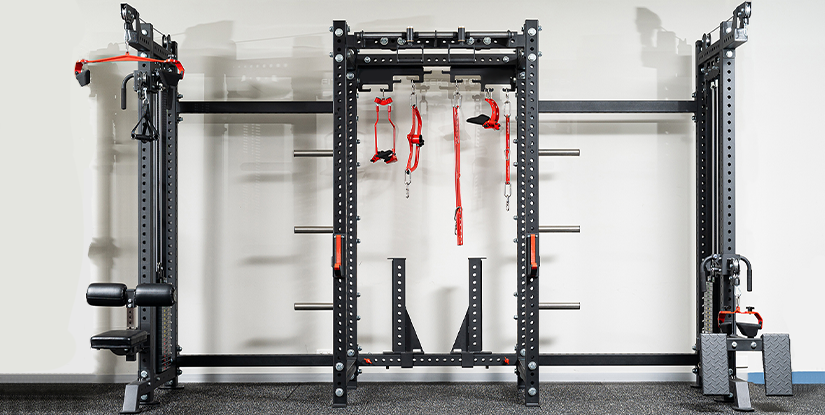Lat Pull Down Machine: Technique, Benefits & Buying Guide

Overview: What is a Lat Pull Down Machine?
The lat pull down machine is a foundational piece of strength-training equipment designed to develop the latissimus dorsi and related upper-body musculature. Found in commercial gyms and home setups, the machine provides a controlled vertical-pulling movement that closely mimics a pull-up while allowing precise load management and varied grip positions.
Primary Muscles Targeted
- Latissimus dorsi (primary)
- Biceps brachii and brachialis (assisting)
- Rhomboids and middle trapezius (scapular control)
- Rear deltoids and teres major (stabilizers)
- Core muscles for stabilization
Benefits of Incorporating the Lat Pull Down
When programmed correctly, lat pull downs offer multiple benefits for lifters of all levels. The exercise improves upper-body pulling strength, contributes to better posture by strengthening the posterior chain, and serves as an accessible alternative for trainees who cannot yet perform strict pull-ups. Additionally, the movement can be adjusted for hypertrophy, strength, or endurance goals by changing load, tempo, and repetitions.
Types of Lat Pull Down Machines
- Traditional cable lat machine: Uses a long bar connected to a weight stack via a pulley. Versatile and common in commercial gyms.
- Cable crossover with lat attachment: Offers multiple cable angles and interchangeable handles for variety.
- Smith system variants: Integrated into multi-station rigs for space efficiency.
- Home gym lat stations: Compact designs with plate-loaded or resistance-band adaptations.
Proper Technique and Form
Follow these steps to execute a clean lat pull down with optimal mechanics:
- Sit with your thighs secured under the pads and feet flat. Maintain a neutral spine and depressed shoulder blades.
- Reach up and grasp the bar with a slightly wider-than-shoulder grip for general lat emphasis. Variations include narrow, supinated, or neutral grips.
- Initiate the movement by retracting the scapulae and then pulling the bar down toward the upper chest. Avoid excessive torso lean; a slight backward lean is acceptable for leverage.
- Pause briefly at the bottom with shoulders down and back, then control the bar back to the start position—do not allow the shoulders to shrug forward rapidly.
- Breathe out during the pull and inhale as you return to the start.
Programming Guidelines
Programming should align with your specific goals. Typical approaches include:
- Strength: 3–6 sets of 3–6 reps with heavier loads and longer rest (2–3 minutes).
- Hypertrophy: 3–5 sets of 8–12 reps with moderate load and 60–90 seconds rest; emphasize tempo and muscle tension.
- Endurance: 2–4 sets of 12–20+ reps with lighter load and shorter rest.
Integrate lat pull downs into upper-body or pull-focused sessions, and balance them with horizontal pulling (rows) to promote scapular and shoulder health.
Common Errors and How to Fix Them
- Excessive torso swing: Reduces lat activation. Fix by reducing load and bracing core.
- Using momentum: Compromises training stimulus. Slow eccentric and controlled concentric phases improve results.
- Elbow flare: Can shift work away from lats. Tuck elbows slightly to target lats more directly.
- Incomplete range of motion: Limits strength gains. Ensure full shoulder extension at top and full scapular retraction at bottom.
Maintenance and Safety Considerations
Regular maintenance ensures longevity and safe operation. Inspect cables for fraying, check pulleys for smooth rotation, and ensure weight stacks and pins are secure. For home users, validate floor stability and bench/seat integrity. Always warm up the shoulders and thoracic spine before heavy sessions to reduce injury risk.
Buying Guide: What to Look For
When selecting a lat pull down machine, evaluate the following:
- Build quality: Solid steel frame and durable coatings resist wear.
- Adjustability: Seat height, thigh pad depth, and multiple handles increase usability.
- Pulley system: Smooth bearings and stainless cables extend service life.
- Weight stack or plate loading: Choose based on budget and training preference.
- Footprint: Ensure the machine fits your space and clearance requirements.
Conclusion
As a versatile and effective tool for upper-body development, the lat pull down machine should be a staple in strength-training programs. When combined with proper technique, progressive overload, and complementary pulling movements, it supports strength, hypertrophy, and postural improvements.
FAQs
- Q: Can lat pull downs replace pull-ups? A: They are a practical alternative but do not fully replace the specificity of pull-ups.
- Q: How often should I perform lat pull downs? A: 1–3 times per week depending on volume and recovery.
- Q: Which grip is best? A: Wide grip targets the upper lats; neutral and underhand grips emphasize lower lats and biceps.
- Q: Should I use momentum? A: No—minimize momentum to ensure muscle engagement.
- Q: Can beginners use heavy weight? A: Start with manageable loads to learn technique and avoid injury.
- Q: Do lat pull downs help posture? A: Yes, when combined with scapular retraction and posterior chain work.
- Q: Is a cable or band setup better at home? A: Cables offer smoother resistance; bands are cost-effective and portable.
- Q: How do I progress the exercise? A: Increase load, reps, or improve tempo; add pauses or slow eccentrics for intensity.
- Q: Are there injury risks? A: Risk is low with proper form; avoid jerking and excessive loading on the shoulder joint.

